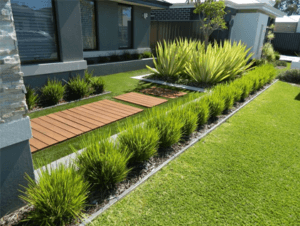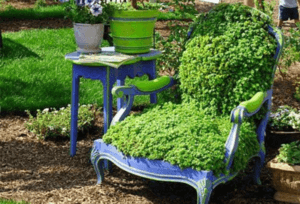There’s not much more important to garden design than your plants.
You need to consider a lot of variables; soil type, garden size, orientation, and of course your own preferences. The planting scheme you go with should align with the vision you have for your garden. Here are some practical points you must consider to get started.
Assess Your Outdoor Space
Get back to basics. Using your measuring tape, plot your garden size onto graph paper and start planning where you can have planting zones without it being too overwhelming. It’ll help you decide on furniture, pots, ornaments, lawn etc. Once you have an idea of where and wha size you want your borders and beds to be, you can use those numbers to order the right plants.
Know Your Shrubs
No two shrubs are the same: flowering shrubs, fast-growing shrubs, evergreen shrubs, shrubs for autumn, etc. And when you’re selecting plants to border your home, they need to be carefully chosen. Certain shrubs are ideal for foundation planting as they don’t grow too big, and require little maintenance.
Be Careful with Vines
Vines have a bunch of landscaping uses. Thanks to their vigour and versatility, garden designers love to get creative with vines. But be careful when you’re choosing the one for your space, as many of them can be invasive. Even if it’s not, vines have a tendency to overgrow, so select carefully and keep a good eye.
Get Your Tree Placement Right
With other types of plants, you can often afford to err. But if you plant a large tree in an area where it shouldn’t have been planted, you may be up for some major headaches in the future. Homeowners often end up paying the price to remove a tree overhanging a house. Or undergrowing it. Also, most trees grow slow, which means you’ll have to wait more than a few years to benefit from them. After having patiently waited for so long, the last thing you’ll want is issues you didn’t ask for.
Choose the Right Ground Cover
Ground cover for your garden could be foliage plants. These plants aren’t known for their beautiful flowers, but their leaves certainly put up a spectacle. If you’re hill landscaping, blue rug juniper is a solid choice. But if you want the ground cover to offer profuse bloom and soil erosion mitigation too besides basic coverage, you may want the beautifully named creeping phlox… It’s a perennial plant that looks the best when it spills down a wall or hillside.
Perennials
For many gardeners, flower gardening and growing perennials are synonymous. If you don’t see yourself replanting annuals, planting perennials that comes up every year is the obvious choice. It’s low-maintenance, which is what we all want, right?
Eden Restored is a team of passionate garden designers working throughout London, Kent and Surrey.
We deliver value-for-money on projects of any size, from inner-city courtyards to countryside cottages.
To discuss your ideas and how we can help throughout the entire process, get in touch.


